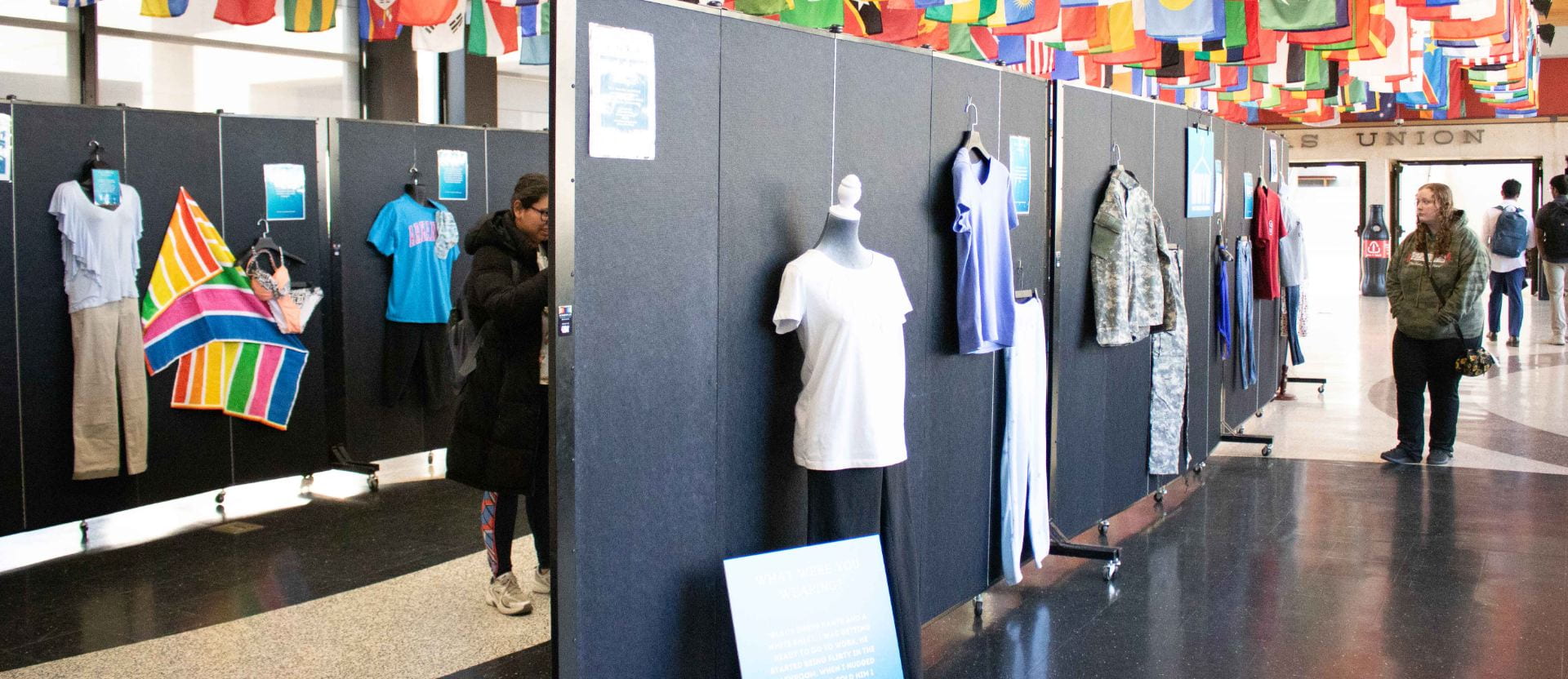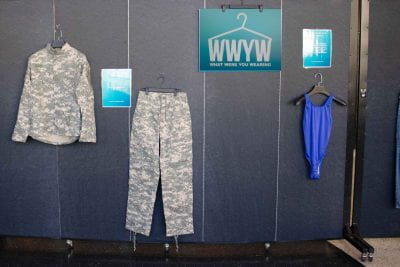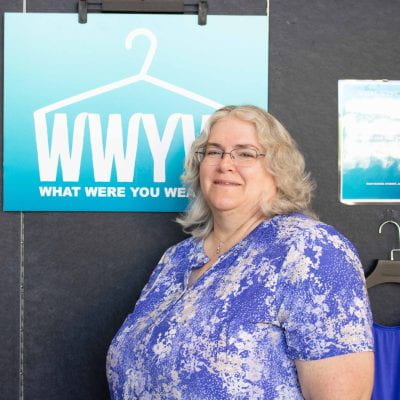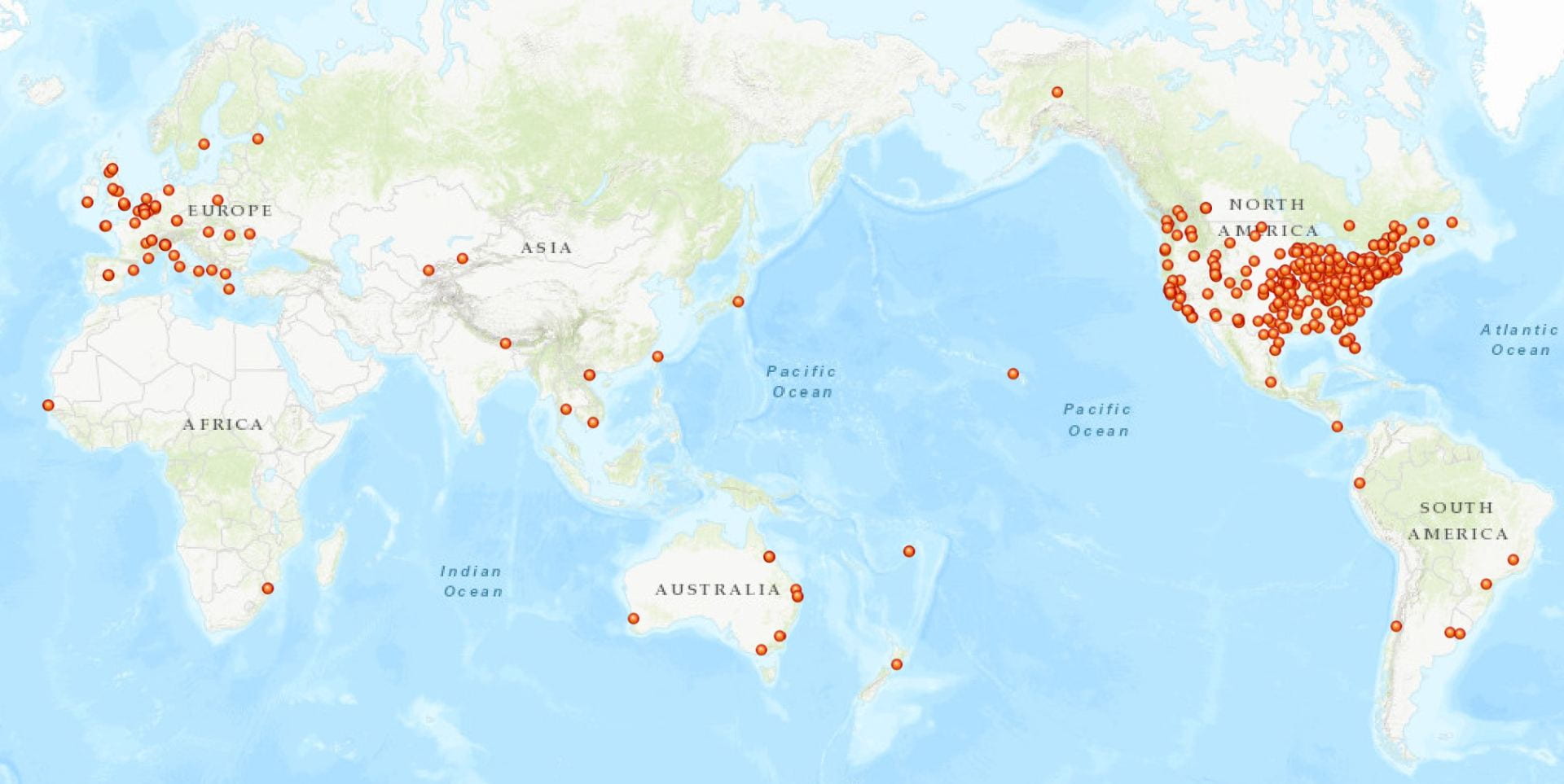
The What Were You Wearing installation has been challenging the world’s out-of-date gaslighting victim-blaming history on sexual assault for a decade and shows no signs of slowing down. This year it was exhibited in the Arkansas Union International Connections Lounge from April 22 to April 25. It has been displayed in at least 38 countries, and some cities in these countries have held exhibits over and over. An exhibit has been held on every continent except Antarctica. In one international instance the exhibition highlighted that more resources were needed and was instrumental in that country opening their first rape-crisis center.
The concept is simple. There are donated clothes and stories that show what people were wearing when they were assaulted. It’s done tastefully, personally, and leaves a lot to the viewers imagination.
Mary Wyandt-Hiebert was at a training in 2013 with Jen Brockman, who was a sexual assault prevention educator at the U of A, when they had the idea for the exhibit.
“At a training in Little Rock in 2013, Jen Brockman and I had a conversation over lunch about a poem that was included within the training packet. I honestly cannot tell you what the training was about, but I can say that the poem spoke loudly to both of us. As we read the poem, What I was Wearing, both of us reflected on the countless times we have worked with victims/survivors and how clothing so often came up as others would often ask, ‘what were you wearing.’ Our conversation centered around how can we do something about this,” Wyandt-Hiebert recounts.
Wyandt-Hiebert is the current director of Campus Sexual & Relationship Violence Center (SRVC.) SRVC provides victim advocacy and education services related to sexual and relationship violence. All the services provided come at no cost to the survivors. They have lists of local resources and are in charge of campus-wide events. What Were You Wearing is one of the big yearly events and always happens during April, which is recognized as Sexual Assault Awareness Month. The University of Arkansas is where it started ten years ago and where it continues to evolve. This year’s installation used mannequins to give the clothes a depth that wasn’t there before.
“The fact that the exhibit is 10 years strong, and more and more are added around the globe is significant. I have seen many fads in outreach with sexual assault that run a few years and then fade and replaced with something else. The fact that this exhibit continues to grow globally is significant of the universal response to an age-old question of “what where you wearing?” Wyandt-Hiebert says.
 Wyandt-Hiebert’s work with SRVC would be impossible to accomplish without a passionate group of student staff who help bring this important work to fruition. These students wouldn’t have chosen this area to work in without the same desire to help that Wyandt-Hiebert has lived for. A SRVC Graduate Assistant had this to say about the exhibit.
Wyandt-Hiebert’s work with SRVC would be impossible to accomplish without a passionate group of student staff who help bring this important work to fruition. These students wouldn’t have chosen this area to work in without the same desire to help that Wyandt-Hiebert has lived for. A SRVC Graduate Assistant had this to say about the exhibit.
“The WWYW exhibit makes me feel empowered and heard on this campus and in the community,” said Carly Gierke, GA for SRVC. “This exhibit raises so much awareness and shows people that sexual assault can impact anyone regardless of what they were wearing or where they were at.”
The results around campus have mostly been positive. Students silently walk through the exhibit, reading the stories, observing the clothing, and making a connection. The empathetic response knowing that your family, friends, or you have worn clothing similar to what’s being displayed is effective. It’s a powerful feeling for students to realize that their school is brave enough to arrange this installation in such a public place every year. It’s an even larger feeling of pride when they realize that this exhibit started at their school.
“I’ve been fortunate to encounter this exhibition three times now, from the University of Kansas campus to Rome, Italy, and finally at my home campus, the University of Arkansas,” said Joelie Duell, senior graphic design major. “Discovering the exhibition originated at my school, where I work and study, filled me with pride and some big emotions. It is a powerful testament to our collective voices reaching beyond borders, and across oceans to shed light on issues that resonate deeply with us.”
The exhibit is ten years strong and if Wyandt-Heibert has anything to say about it, the installation will just grow and evolve, teaching people through empathy.
Here is a map that Jen Brockman’s group has been pulling together. It is not exhaustive as these are just the ones that we are officially aware of.


